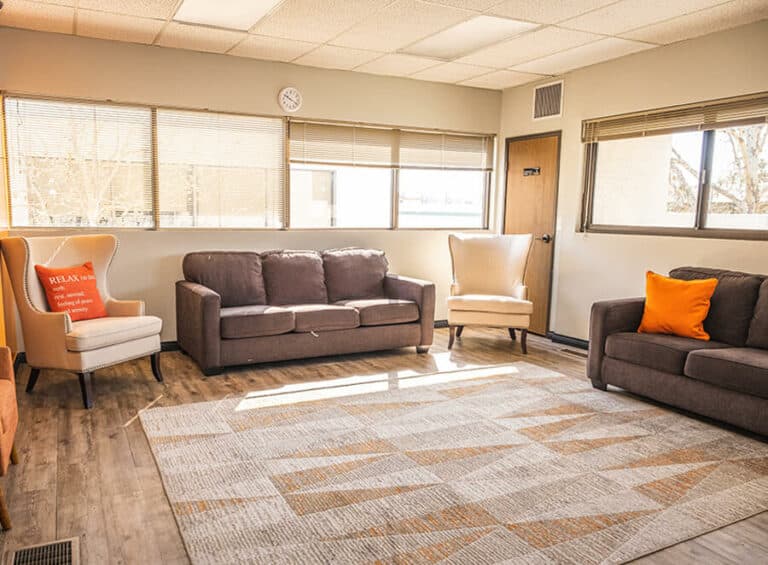Rancho Cucamonga, CA Drug Rehabs
Showing 1 to 15 of 634 results
-
New Creation
Levels of Care: Outpatient, Residential/24-hour residential
Payment Options: Cash or self-payment, Federal military insurance (e.g., TRICARE), Medicaid, Private health insurance
-
Inland Valley Drug and Alcohol
Levels of Care: Outpatient, Residential/24-hour residential, Hospital inpatient/24-hour hospital inpatient,
Payment Options: Cash or self-payment, Federal military insurance (e.g., TRICARE), Medicaid, Private health insurance, State-financed health insurance plan other than Medicaid
-
Ad
 15 miles away
15 miles away
Pacific Grove Hospital
Levels of Care: Inpatient, Outpatient, Detox, Partial-Hospitalization, Intensive Outpatient, Multiple Levels of Care
Payment Options: Medicare, TRICARE, Blue Cross Blue Shield, Beacon, Kaiser Permanente, WellCare, VA Funding, Insurance Accepted, Humana, Optum, Aetna, Cigna, TriWest
-
Embrace Recovery
Levels of Care: Outpatient, Residential/24-hour residential, Hospital inpatient/24-hour hospital inpatient,
Payment Options: Cash or self-payment, Federal military insurance (e.g., TRICARE), Medicaid, Private health insurance, State-financed health insurance plan other than Medicaid,
-
New Creation
Levels of Care: Outpatient, Residential/24-hour residential, Hospital inpatient/24-hour hospital inpatient,
Payment Options: Cash or self-payment, Federal military insurance (e.g., TRICARE), Medicaid, Private health insurance, State-financed health insurance plan other than Medicaid,
-
His House Palm Recovery
Levels of Care: Outpatient, Residential/24-hour residential, Hospital inpatient/24-hour hospital inpatient,
Payment Options: Cash or self-payment, Federal military insurance (e.g., TRICARE), Medicaid, Private health insurance, State-financed health insurance plan other than Medicaid,
-
Ad
 25 miles away
25 miles away
Newport Institute for Young Adults
Levels of Care: Outpatient, Residential, Partial-Hospitalization, Intensive Outpatient, Telehealth, Intervention, Counseling, Multiple Levels of Care
Payment Options: Private Pay, Regence, Blue Cross Blue Shield, Beacon, Kaiser Permanente, Anthem, United Behavioral Health, Health Net, Oxford Health Plans, Insurance Accepted, Humana, Optum, Aetna, Cigna, Harvard Pilgrim, United Healthcare, First Choice Health
-
His House Treatment Center
Levels of Care: Outpatient, Residential/24-hour residential, Hospital inpatient/24-hour hospital inpatient,
Payment Options: Cash or self-payment, Federal military insurance (e.g., TRICARE), Medicaid, Private health insurance, State-financed health insurance plan other than Medicaid,
-
CLARE Matrix
Levels of Care: Outpatient, Residential/24-hour residential, Hospital inpatient/24-hour hospital inpatient,
Payment Options: Cash or self-payment, Federal military insurance (e.g., TRICARE), Medicaid, Private health insurance, State-financed health insurance plan other than Medicaid, Medicare,
-
Aegis Treatment Center
Levels of Care: Outpatient, Residential/24-hour residential, Hospital inpatient/24-hour hospital inpatient,
Payment Options: Cash or self-payment, Federal military insurance (e.g., TRICARE), Medicaid, Private health insurance, State-financed health insurance plan other than Medicaid, Medicare,
-
Ad
 34 miles away
34 miles away
OC Revive – Drug and Alcohol Rehab
Levels of Care: Teen Treatment, Outpatient, Partial-Hospitalization, Intensive Outpatient, Telehealth, Medication-Assisted Treatment, Sober-Living Home, Multiple Levels of Care
Payment Options: Financing Available, TRICARE, Private Pay, UMR, AmeriHealth, Blue Cross Blue Shield, ComPsych, Beacon, Anthem, Health Net, MultiPlan, Magellan Health, Optima Health, Optum, Aetna, MHN, Cigna, United Healthcare, MBHP | Mass Health
-
Inland Valley Recovery Services
Levels of Care: Outpatient, Residential/24-hour residential, Hospital inpatient/24-hour hospital inpatient,
Payment Options: Cash or self-payment, Federal military insurance (e.g., TRICARE), Medicaid, Private health insurance, State-financed health insurance plan other than Medicaid, Medicare,
-
Hathaway Recovery
Levels of Care: Outpatient, Residential/24-hour residential, Hospital inpatient/24-hour hospital inpatient,
Payment Options: Cash or self-payment, Federal military insurance (e.g., TRICARE), Medicaid, Private health insurance, State-financed health insurance plan other than Medicaid, Medicare,
-
RS Recovery Services Inc
Levels of Care: Outpatient, Residential/24-hour residential, Hospital inpatient/24-hour hospital inpatient,
Payment Options: Cash or self-payment, Federal military insurance (e.g., TRICARE), Medicaid, Private health insurance, State-financed health insurance plan other than Medicaid, Medicare,
-
Ad
 34 miles away
34 miles away
OC Revive – Teen Rehab Center
Levels of Care: Teen Treatment, Partial-Hospitalization, Intensive Outpatient, Telehealth, Sober-Living Home, Multiple Levels of Care
Payment Options: Financing Available, TRICARE, Private Pay, UMR, AmeriHealth, Blue Cross Blue Shield, ComPsych, Beacon, Anthem, Health Net, MultiPlan, Magellan Health, Optima Health, Optum, Aetna, MHN, Cigna, United Healthcare, MBHP | Mass Health
-
Grace Hope Treatment and
Levels of Care: Outpatient, Residential/24-hour residential, Hospital inpatient/24-hour hospital inpatient,
Payment Options: Cash or self-payment, Federal military insurance (e.g., TRICARE), Medicaid, Private health insurance, State-financed health insurance plan other than Medicaid, Medicare, IHS/Tribal/Urban (ITU) funds,
-
W and G Enterprises Inc
Levels of Care: Outpatient, Residential/24-hour residential, Hospital inpatient/24-hour hospital inpatient,
Payment Options: Cash or self-payment, Federal military insurance (e.g., TRICARE), Medicaid, Private health insurance, State-financed health insurance plan other than Medicaid, Medicare, IHS/Tribal/Urban (ITU) funds,
-
HealthRIGHT 360
Levels of Care: Outpatient, Residential/24-hour residential, Hospital inpatient/24-hour hospital inpatient,
Payment Options: Cash or self-payment, Federal military insurance (e.g., TRICARE), Medicaid, Private health insurance, State-financed health insurance plan other than Medicaid, Medicare, IHS/Tribal/Urban (ITU) funds,
-
HealthRIGHT 360
Levels of Care: Outpatient, Residential/24-hour residential, Hospital inpatient/24-hour hospital inpatient,
Payment Options: Cash or self-payment, Federal military insurance (e.g., TRICARE), Medicaid, Private health insurance, State-financed health insurance plan other than Medicaid, Medicare, IHS/Tribal/Urban (ITU) funds,
Loading results...
No listings found.
Showing 1 to 15 of 634 results
Government Programs
Find local government programs that promote sober living and will help you find peace in your day to day life.
College Programs
Student Services
Platt College-Ontario
3700 Inland Empire BlvdOntario, CA 91764 Visit Website ⟶ 909-941-9410
Platt Campus Center
Harvey Mudd College
301 Platt BoulevardClaremont, CA 91711 Visit Website ⟶ 909.621.8125
Tranquada Student Services Center
Claremont McKenna College
1st Floor757 College Way, Claremont, CA 91711 Visit Website ⟶ (909) 607-3602
Monsour Counseling and Psychological Services (MCAPS)
Scripps College
757 College WayClaremont, CA, 91711 Visit Website ⟶ (909) 621-8202
Student Health Services (SHS)
Pitzer College
1stFloor757 College Way Claremont, CA, 91711 Visit Website ⟶ (909) 621-8222
Counseling and Psychological Services – CAPS
University of La Verne
2215 E St La VerneCA 91750 Visit Website ⟶ 909-448-4178
Counseling Services
California State Polytechnic University-Pomona
3801 West Temple AvenueBldg. 66-116, Pomona, CA 91768 Visit Website ⟶ 909-869-3220
Emmaus Road Christian Counseling (ERCC)
Life Pacific College
1111 W. Covina Blvd.Suite 120A, San Dimas, CA 91773 Visit Website ⟶ 877-886-5433
AA and NA Meetings in Rancho Cucamonga
Alcoholics Anonymous San Gabriel / Pomona Valley Central Service Office
849 E. Route 66 Suite D, Glendora CA 91740Fellowship
Alcoholics Anonymous (AA)
Hours
Monday 9:00 am - 5:00 pm
North Orange County Central Office of Alcoholics Anonymous
1661 E. CHAPMAN AVE. SUITE 1H, FULLERTON, CA 92831Fellowship
Alcoholics Anonymous (AA)
Hours
Monday 9:00 am - 7:00 pm
Feature your center
Ready to connect with treatment seekers across the country? Enter your information to learn about our advertising options and get in contact with our development team.


